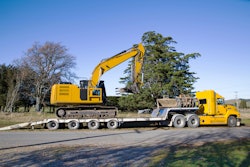
New changes to federal rules that affect the construction industry should save contractors some money—in some cases.
The biggest money-saving change eliminates the requirement that employers post maximum safe-load limits of floors in storage areas when “constructing single-family dwellings or wood-framed multi-family structures.”
The U.S. Occupational Safety and Health Administration says this will result in $5.8-million-a-year in total savings to the construction industry.
OSHA said posting safe-load limits was not needed in residential construction “because employers do not place heavy materials in storage areas above floor or slab on grade.”
“OSHA finds that the revision will lessen the compliance burden of employers without jeopardizing the safety of employees,” the final rule says. “While employers involved in residential construction do not place heavy loads on the floors of these structures, the revision does not relieve employers of the duty to ensure that any loads placed on these floors do not exceed the maximum safe loads of the floors.”
This and other changes were issued May 13 by OSHA to try to clear up confusion with compliance with worker safety and health standards, as well as bring the standards up to date. The standards were last revised in 2011.
The new rules were published in the Federal Register on May 14. They will take effect July 15.
Here are some other highlights of the rule changes:
- Eliminates requirement that employers provide periodic chest X-rays to screen for lung cancer. OSHA says studies have shown X-ray screening does not reduce lung cancer incident or death.
- Updates the requirements for providing emergency services contacts. OSHA adds a requirement that employers must ensure that their communication system can effectively contact 911 services. And if the system is in an area that does not automatically supply the caller’s location to the 911 dispatcher, the employer must post or provide in some way the worksite’s longitude and latitude to employees. OSHA estimates this requirement will cost the construction industry a total of $32,440 a year. This cost will dissipate as enhanced 911 wireless service becomes universal, OSHA says.
- Changes the minimum breaking-strength requirement for lifelines for fall protection to 5,000 pounds instead of 5,400 pounds. This was done for consistency and to end confusion.
- Updates standards for traffic control devices at road construction areas to comply with the 2009 edition of the Manual on Uniform Traffic Control Devices, the same as used by the U.S. Department of Transportation, as well as state DOTs.
- Eliminates the requirement that employees’ Social Security numbers be provided on exposure monitoring, medical surveillance or other records designed for OSHA to track employees for research purposes. Social Security numbers are no longer required for these OSHA standards: Respirable Crystalline Silica; Hazardous Waste Operations and Emergency Response; Asbestos; Vinyl Chloride; Inorganic Arsenic; Lead; Chromium, Cadmium, Benzene, Coke Oven Emission, Bloodborne Pathogens, Cotton Dust; 1,2 Dibromo-3-Chloropropane; Acrylonitrile; Ethylene Oxide; Formaldehyde; Methylenedianiline; 1,3-Butadiene; and Methylene Chloride.











